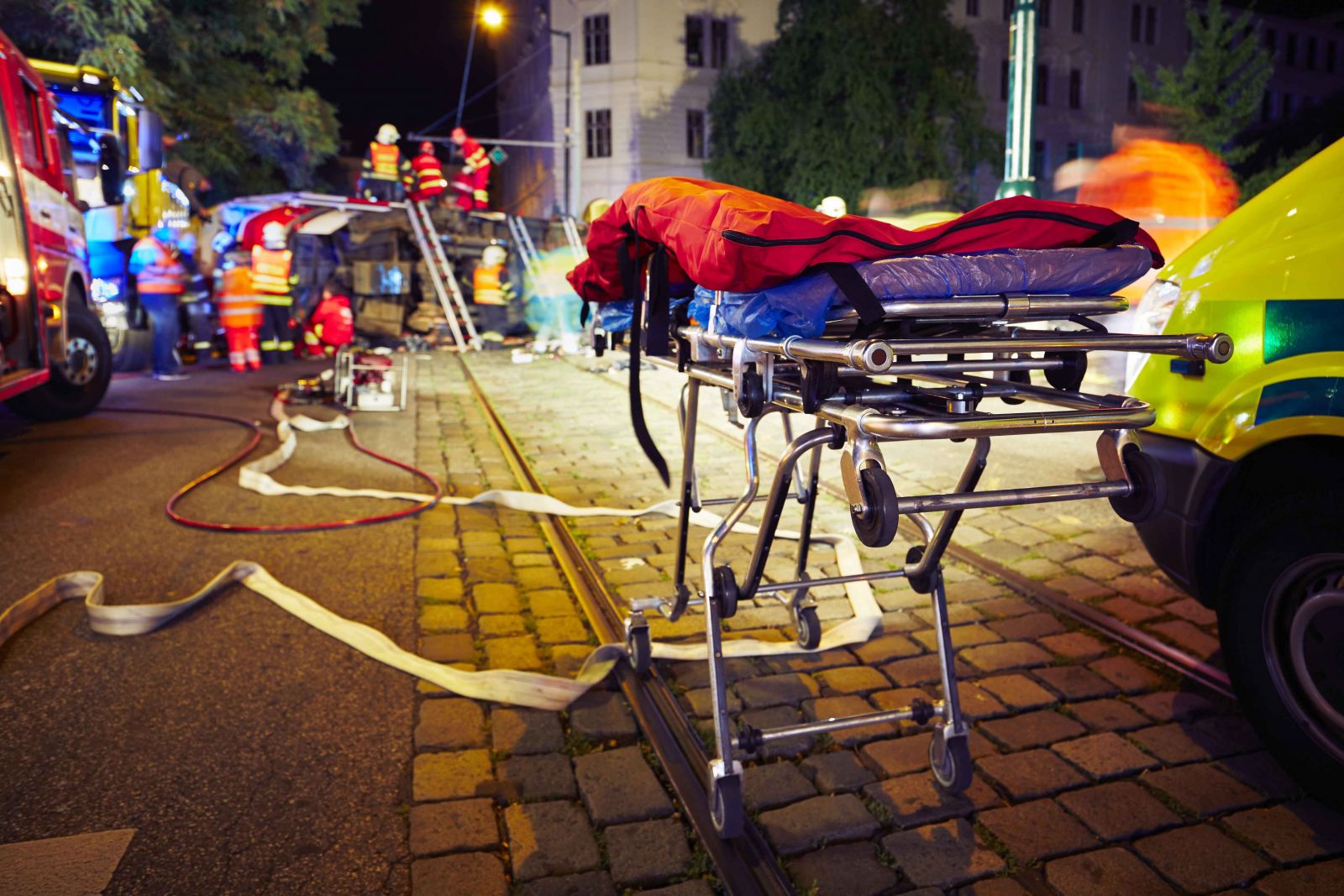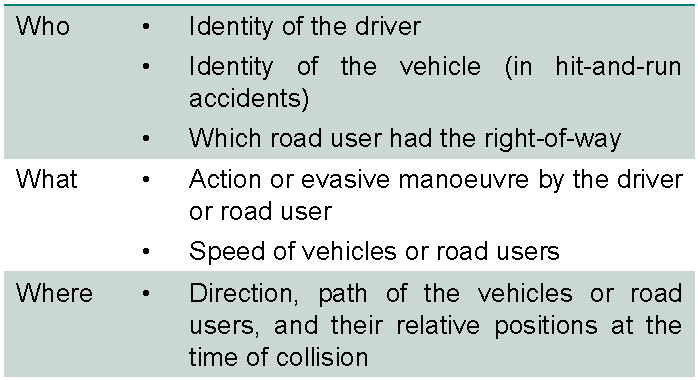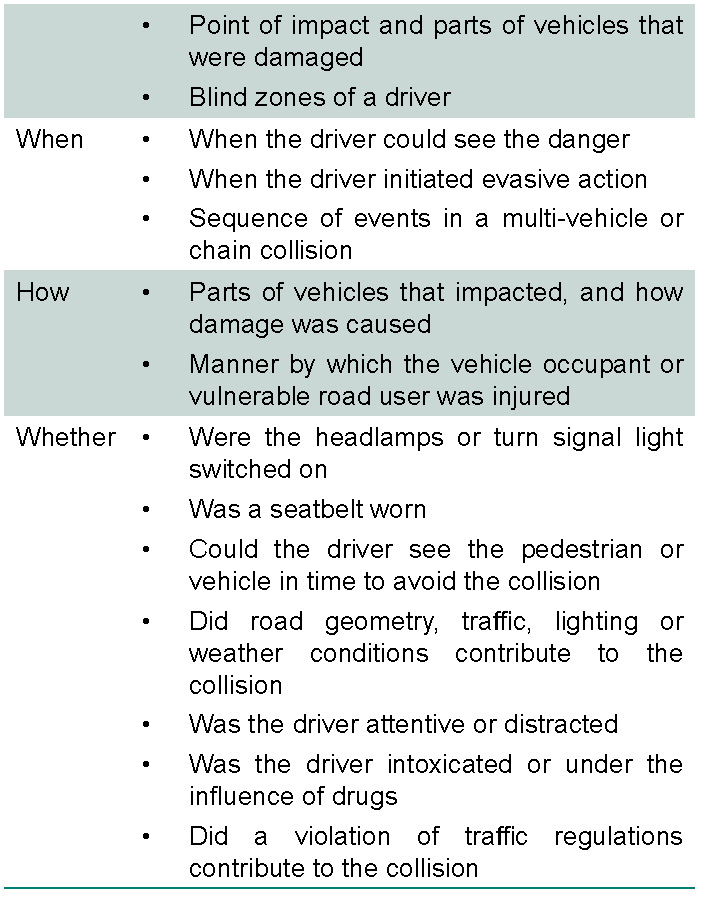Traffic Accident Reconstruction A Primer for Lawyers
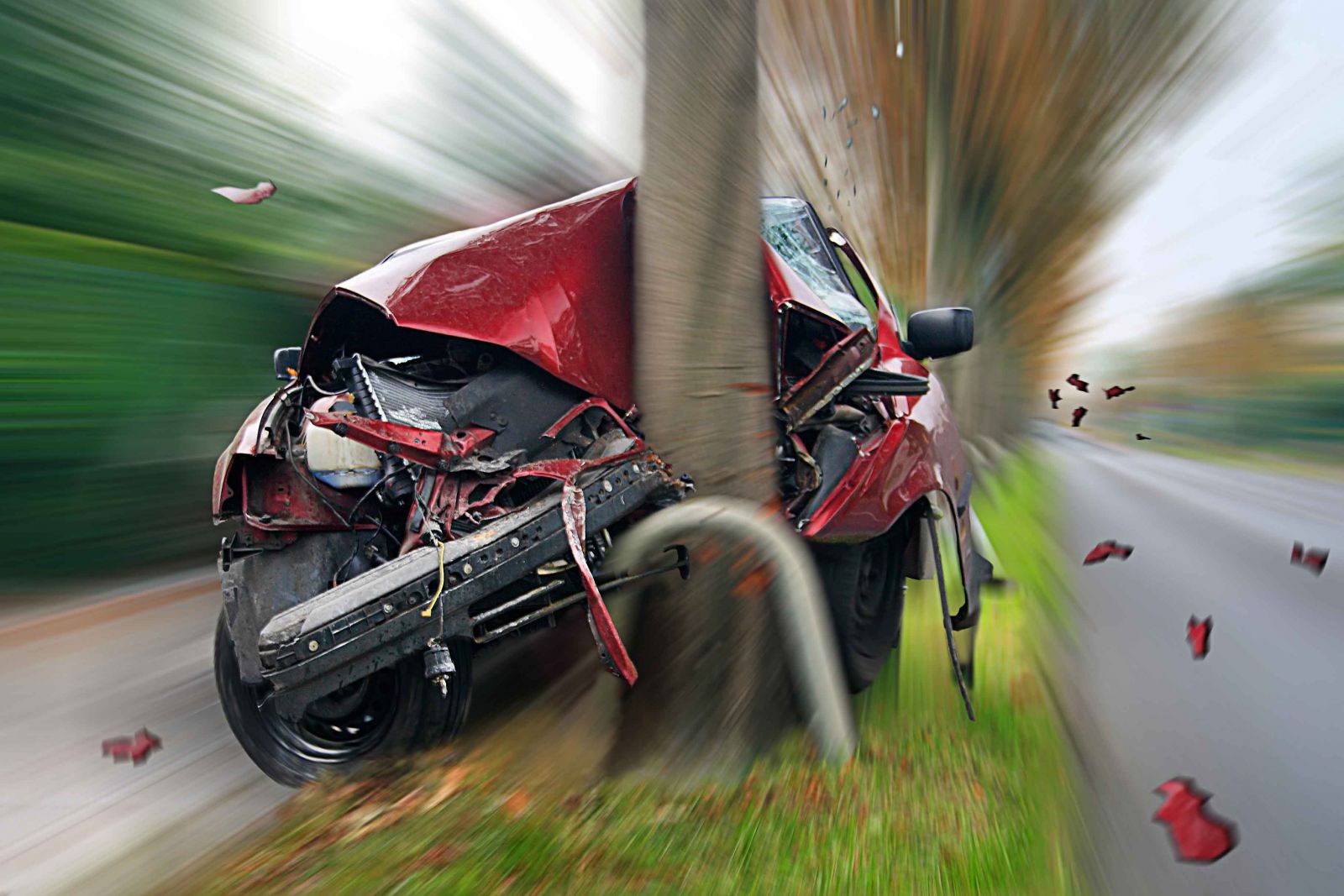
Introduction
Thousands of traffic collisions occur in Singapore each year, giving rise to vehicular damage insurance claims, medical treatment and compensation claims, criminal charges for culpable driving, coroner inquiries, civil suits, and other legal actions. Traffic accidents exact a heavy economic and social toll in terms of medical costs, repair costs, loss of future income, cost of investigation and legal procedures, as well as untold pain and suffering. Many of these legal, liability and financial actions require the clear and accurate determination of specific details relating to various phases of the incident.
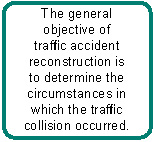
In 2015, 14,982 vehicles in Singapore were involved in accidents, causing 151 fatalities and 10,412 road casualties.1 Drink-driving caused 134 accidents and 14 fatalities. Vulnerable road users accounted for 132 fatalities (87 per cent of the total): motorcyclists and pillion riders 72; pedestrians 43; and cyclists 17.
Traffic accident reconstruction draws on known information captured after the collision (ie, scene photographs, measurements and physical evidence, police statements) to uncover information on the unknown conditions and human actions before the collision. Traffic accident reconstruction experts are frequently required to evaluate differing or opposing statements of the parties involved in an incident. Traffic collision requests typically revolve around determination of vehicle speed, point of impact, relative positions of the vehicles at the time of collision, trajectory analysis, identification of actions taken by parties and determining whether their avoidance actions might have been effective.
Types of Traffic Collisions
Traffic collisions may involve road vehicles such as passenger cars, vans, light goods lorries, heavy trucks, buses, and vulnerable road users on motorcycles, scooters, conventional and power-assisted bicycles, personal mobility device (“PMD”) users (skateboards, kick scooters, e-scooters and e-wheels) and pedestrians.
A moving vehicle may collide with a fixed object (eg lamp-post, tree), a stationary vehicle, another moving vehicle, a bicycle, a pedestrian or an animal. Accidents may involve a single vehicle or multiple vehicles.
Types of traffic crashes include: head-on (frontal), sideswipe, broadside (side impact), road departure, rear-end, under-ride, yaw, fall, flip and rollover. Collisions may occur along straight segments, bends, at pedestrian crossings or at junctions. A vehicle may be turning, changing lane, merging into a lane, passing, crossing a junction or negotiating a bend.
Levels of Forensic Analysis in Traffic Collisions
Forensic analysis of traffic collisions relies on a working knowledge of many disciplines including physics, engineering, vehicle dynamics, mathematics, computer applications, human factors, biomechanics, forensic scene analysis, trace evidence, bloodstain patterns and damage analysis. Four different levels of analyses related to traffic collisions are summarised in Table 1:
Table 1: Different levels of forensic analyses related to traffic collisions
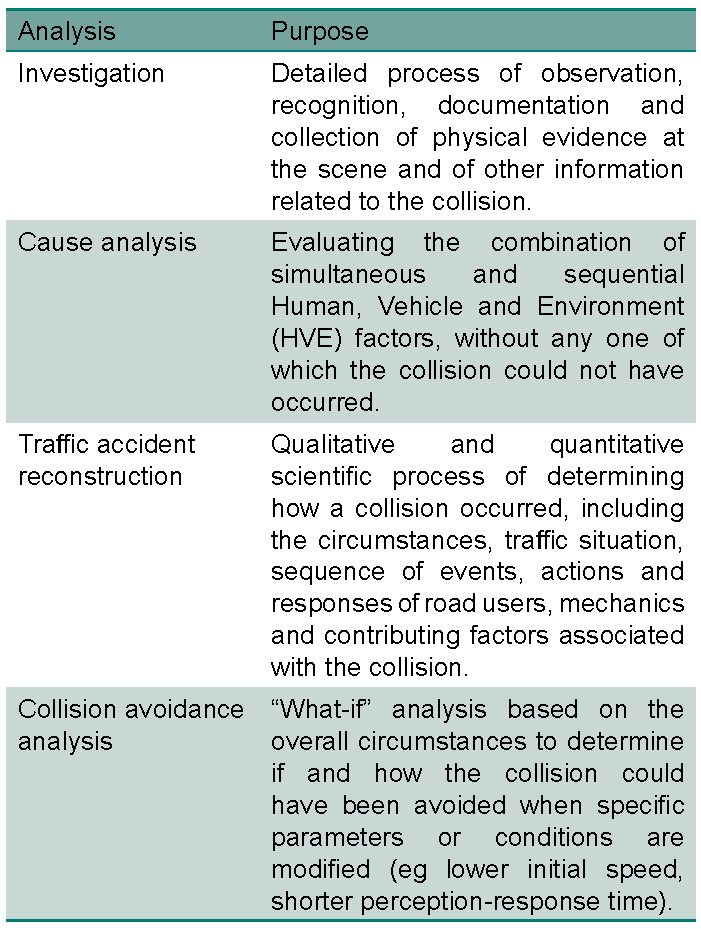
Common Questions Arising in Traffic Collisions
Typical questions arising in traffic collisions relate to the How and five Ws: Who, What, When, Where and Whether (refer to Table 2):
Table 2: Common questions arising in traffic collisions
Factors Contributing to Traffic Collisions
Traffic collisions are typically caused by one or a combination of three types of factors: human factors (“H”), the vehicle (“V”), and the environment (“E”).
Human factors (“H”) and driver characteristics: Driver characteristics include age, gender, driving experience, expectancy, health conditions, visual and auditory acuity, personal habits, attitudes towards traffic regulations, and risk-taking behavior. Risk-taking behavior includes speeding, aggressive driving, tail-gating, alcohol consumption, not wearing seatbelts, and distraction by mobile devices. Drowsiness, fatigue and alcohol impairment adversely affects alertness, perception, judgment and reactions.
Driver expectancy is an important factor in traffic situations. Drivers expect normal traffic flow and compliance with traffic regulations by other road users. Collisions are not a typical driver’s routine experience. When confronted with a life-threatening emergency, uncertainties in the behavior of other road users and the dilemma of an evasive manoeuvre, the outcome of the traffic conflict may depend more on the chance of the circumstances than the performance capabilities of the driver and his vehicle. Surveys reveal that the majority of drivers consider themselves more skillful and safer than the average driver. Ironically, despite this self-confidence, human error is the major cause of traffic accidents.
Vehicle factors (“V”): Modern vehicles are designed and manufactured to stringent safety standards for occupant and pedestrian protection, vehicle control and handling. Regular maintenance and annual vehicle inspections minimise component failures.
Environmental factors (“E”): These include traffic density, road geometry, road surface condition, weather, lighting, contrast and visibility, speed limit, traffic signs and control devices, and visual obstructions. Advances in traffic engineering and road design have improved road geometry and the safety of the driving environment.
Evidence from Traffic Collisions
Physical evidence useful for accident reconstruction include: skid marks, yaw marks and gouge marks on the road surface, broken vehicle debris such as lamp covers and windshields, paint chips and smears, bloodstains, vehicle liquid run-offs, final rest positions of vehicles, damaged roadside furniture, injuries, damage on the vehicles, and video evidence.
In hit-and-run cases,2 trace evidence3 such as paint smears, fibres and glass, blood and damage evidence from the scene, suspect vehicle and victim are submitted for laboratory analysis to provide associations and linkages between the scene, suspect and victim. In the absence of physical evidence, the numerous uncertainties and possibilities in traffic accident reconstruction may not be adequately resolved or answered.
For cases involving fatalities, Traffic Police (“TP”) officers attending the collision scene typically identify and mark (label) physical evidence, select a reference point (eg, lamp-post), photograph and measure the scene and damaged vehicles, and depict locations and measurements in a sketch plan. Video footage from video recordings of vehicles involved in the collision, or from nearby vehicles and the surroundings are also collected by TP. They would also visually inspect damage on accident vehicles, documenting observations in a Vehicle Damage Report. However, not every collision will involve detailed scene investigations and collection of physical evidence.
Witness statements are an important product from Traffic Police’s investigation. Eye witnesses may fill vital gaps between what can be observed, photographed and documented at scenes. Their accounts can be found in Police Statements and Traffic accident reports. Although a useful source of information, eye witness accounts must be carefully evaluated against physical evidence because traffic collisions are usually unexpected and very brief events, limiting reliable perception and memory. It is not surprising that some of these accounts are reasonably accurate, while others are inconsistent, unreliable and misleading.
Supporting expert reports and documents include medical and autopsy reports, vehicle damage reports, vehicle specifications, trace evidence and blood alcohol concentration reports.
Physical evidence, witness statements and supporting expert reports and documents are vital for the success of traffic accident reconstruction.
Role of the Forensic Expert
Generally, to conduct a forensic analysis of an incident, forensic experts are engaged to:
1. visit the accident scene to document the scene, take measurements and photographs, evaluate skid-marks on the roadway, final rest positions of the vehicles, debris and other physical evidence,
2. examine the vehicles for damage and transfer evidence (paint, blood, glass, fibres, etc),
3. review prior reports, sketch plans, witness statements, and data collected,
4. extract, enhance and analyse video footage of an accident,
5. conduct simulations such as determination of blind zone, and evaluate various factors that potentially contributed to the accident.
Key Scientific Principles, Concepts and Methods
Key principles in physics for traffic accident reconstructions are Newton’s laws of motion, the coefficient of friction, energy, conservation of linear momentum, and vehicle damage (depth of crush). Methods commonly used in accident reconstruction are based on: skid marks, pedestrian throw distance, time-distance analysis and crush depth. The choice of method depends on the incident, and the type and amount of information available.
Common pitfalls related to traffic accident reconstructions include:
1. Perception-reaction time (“PRT”): PRT is the time that elapses between the point where the driver sees the danger and when the evasive manoeuvre (braking, steering, etc) commences. PRT is specific to the traffic situation, depending on the response task, the nature and strength of the stimulus, lighting, conspicuity, the driver’s physical condition, cognitive load, expectancy, and other factors. Collision avoidance analysis requires selection of the range of PRTs appropriate to the traffic situation. A benchmark value of 1.5 seconds may be appropriate in the daytime under good visibility conditions. Night-time PRTs may range from 1.5 to 2.5 seconds or higher.
2. Computer software analysis: Computer software, simulation programs and graphic presentation techniques have made great advances, allowing faster calculations and slick displays. However impressive animation displays, graphs and tables are, they may not necessarily imply accuracy and quality. Modern technological aids must be responsibly and ethically used without compromising on the reliability of analysis, interpretations and expert opinions.
Challenges and Limitations in Reconstruction
The feasibility of reconstruction depends on, and can be limited by, the quantity and quality of information available. Critical details and physical evidence which were not recognised, documented or collected at the scene is permanently lost, resulting in gaps and uncertainty.
1. Lack of factual information and evidence documented for non-fatal “minor” cases make reconstruction unfeasible, limited or technically challenging.
2. Some marks on the roadway are faint, transient and could be overlooked by investigators lacking experience or processing the scene under poor lighting.
3. Poorly collected or uncollected physical evidence such as broken vehicle debris, and missing information such as the final position of the damaged vehicle can adversely affect the scope of analyses and the definitiveness of the conclusions.
4. Requests for reconstruction may be months or years after the traffic accident, by which time roadway marks are obliterated, damaged vehicles repaired or scrapped, and roads even altered.
5. Analysis of scene photographs and review of prior documents is less informative than first-hand examination of the fresh scene.
As accident reconstruction involves many areas of qualitative and quantitative analyses, the expertise of a multi-disciplinary traffic accident reconstruction expert is recommended to properly define the scope and extent of the analysis, evaluate case complexity, identify key issues, and mitigate or account for uncertainty in measurements, assumptions and limitations. Although physics formulas and equations for calculating impact speeds, collision avoidance and other information about crash vehicles are scientifically sound, results depend on the accuracy and appropriateness of input values. Inappropriate input values can lead to diametrically opposite and erroneous conclusions.
Defence counsel and experts may face additional challenges, such as:
1. Restricted, incomplete or delayed access to critical documents such as police scene photographs, sketch plans, vehicle damage reports, video recordings, reports and statements of witnesses. Application has to be made by defence lawyers for the different documents, some of which may be withheld, or released in parts over time. The detailed police statements of witnesses are usually unavailable to defence counsels, limiting the amount of information available for the defence expert to provide a holistic analysis of an incident.
2. Traffic Police charges $55 for each TP photograph of the scene and $95 for a sketch plan.4 A full set of photographs may cost thousands of dollars, a hefty sum that has to be paid by the parties involved in the incident.
3. Analysis of expert reports without access to the original physical evidence is less informative than first-hand examination of the evidence. Defence counsel and their experts are at a disadvantage when seeing through the lenses of others who may have missed out or misinterpreted details.
4. As a result of the highly technical nature of a traffic reconstruction report, it is not easy for a lay-person to fully comprehend the significance of the forensic findings, conclusions and limitations in the report.
Local Cases Involving Traffic Accident Reconstructions
Selected traffic cases which our forensic experts have reported on include:
AYE 4-vehicle accident case5
Just after midnight on 19 February 2012, assistant supervisor Seow Hong Xuan, 35 was driving his car on the AYE towards Tuas when it rear-ended the motorcycle of Malaysian Tan Kin Heng, 41. Tan’s motorbike skidded and he was projected onto the roadway. Stopping his car on the centre lane, Seow switched on his hazard lights and went to check on the motorcyclist. Accident reconstruction revealed a taxi driven by Han Choo Bok approaching the scene at a speed of 101 to 107 km/h, and rear-ending Seow's stationary unmanned car. The impact pushed the car forward, fatally striking both Seow and Tan. The propelled car then struck the rear of a lorry passing on the left lane. The speed limit on the AYE was 90 km/h. Han, 38, was jailed for 10 months and disqualified from driving for eight years.
Bus accident that led to the Little India Riot6
On Sunday night, at about 9.07 pm, 8 December 2013, an inebriated Indian national, 33-year old Sakthivel Kumaravelu was running after a moving bus that fetched foreign workers back to dormitories in Tuas. TFEG’s experts were engaged by Traffic Police to determine the trajectory and speed of the bus, movement of the deceased, blind zone of the driver and the circumstances of the incident. Our experts conducted scene analysis, examined the trace evidence on the deceased's clothing, bloodstain pattern on the bus, and the damage on the interior of the bus. Reconstruction revealed that the bus initially travelled at 6 km/h along Tekka Lane, and accelerated to 11 km/h while turning left onto Race Course Road. As the bus was turning and off-tracking (rear tyres pulling inward of the steering path), Sakthivel unfortunately came alongside, and placed his right palm against the left side of the bus. He lost his balance, fell onto the road and was run over by the bus. Key contributing factors were: rainy weather and wet roads, congested human and vehicular traffic which imposed heavy cognitive demands on the 55-year-old driver, and the unexpected actions of alcohol impaired Sakthivel who was coincidentally hidden in the driver’s blind zone during critical moments, and his fall in the bus's path as it made its turn. The accident sparked Singapore’s worst riot in over 40 years. The damage analysis findings were used in the prosecution of the rioters.
Fatal collision between vehicle and cyclist7
On 16 May 2014, a fatal traffic accident occurred on Woodlands Avenue 5 involving a car and a cyclist. TFEG was engaged to review the Health Sciences Authority’s (“HSA”) report, analyse video footage from the driver’s car, and evaluate the driver’s statement, police sketch plan, scene photographs and reports in order to provide a second opinion. The key findings and conclusions in TFEG’s report were significantly different from the HSA’s report. During the second tranche of the trial, the Attorney-General’s Chambers re-amended the charge from “causing death by a negligent act” under section 304(b) of the Penal code to “did drive without reasonable consideration for other road users, to wit, by driving at a speed in excess of the prescribed road speed limit of 60 kmph” and “failing to give way to a pedal cyclist”, causing the collision which resulted in the death of the cyclist and committing an offence punishable under section 65(b) of the Road Traffic Act, Chapter 276.
Reversing vehicle accident8
On Monday afternoon, 13 June 2011, Australian expat home-maker Mrs Harrington returned home. She stopped her MPV along the road, opened the metal gates, got back into the driver’s seat and started reversing into the driveway of her bungalow. Unknown to her, her two-year old son was running up to the car. As she continued reversing and turning the car, it knocked down and ran over the little boy. Despite the car being equipped with a rearview video camera and monitor in addition to the rearview and wing mirrors, the small boy had been hidden in the side and rear blind zones of the MPV most of the time during his movements.
Conclusion
Traffic accident reconstruction, cause analysis and collision avoidance analysis are a technically challenging forensic discipline due to the required working knowledge of many areas in science and engineering. Traffic collisions often involve a complex combination of many factors. A traffic accident reconstruction report may appear to be generally readable, but owing to its highly technical nature, it is unlikely that its contents, methodology and underlying assumptions can be fully comprehended and independently appraised by a lay-person. As custodians of domain knowledge, information and opinions that can influence the course of justice, the forensic expert must adhere to strict principles of professional ethics and responsibility. Knowledge must be correctly applied, and findings must be based on evidence and not on speculation.
This forensic discipline has the potential to provide information to critical questions arising from a traffic collision. Hence, it is useful to investigators, the Court, insurance companies, parties involved, and the public.
What’s Next?
The next article by The Forensic Experts Group in this Forensic Science Series takes a look at “Counterfeit Drugs and Medical Devices”. The general concepts and principles behind the analysis of unknown chemicals and materials, forensic toxicology, controlled drugs, marks and prints are applicable to the analysis of counterfeit drugs. The article will address the science behind the discipline, and the methodology commonly adopted for examining and reporting on cases involving counterfeit products.
The Forensics Experts Group*
* The Forensic Experts Group (“TFEG”) is Singapore’s first one-stop private and independent provider of forensic consultancy, analysis, research, training and education for legal and law enforcement agencies, forensic and tertiary institutions, and private organisations. It comprises a team of accomplished and innovative forensic scientists, who are combining 75 years of specialised knowledge, unique experience and skillsets to deliver high quality forensic services both locally and overseas. While leading the Forensic Chemistry & Physics Laboratory at the Health Sciences Authority, TFEG’s senior forensic scientists developed traffic accident reconstruction capabilities since 2004.
www.forensicexperts.com.sg
Notes
1 Yearbook of Statistics Singapore, 2016. Section 17.11 “Road Traffic Accident Casualties” (page 192) Department of Statistics, Singapore.
2 “4-week jail sentence for GP who caused cyclist’s death in hit-and-run”, AsiaOne (25 May 2012).
3 PP v Wan Chin Hon [2005] SGHC 121.
4 http://www.police.gov.sg/e-services/apply/certified-true-copy-of-police-report
5 “Freak accident on AYE: Cabby jailed 10 months”, Straits Times (9 Apr 2013).
6 “Report of the Committee of Inquiry into the Little India Riot on 8 December 2013” Annexes, pages B11–B13, June 2014. Ministry of Home Affairs.
7 PP v Koh Ah Hong MAC 908396 of 2014.
8 “Boy, 2, dies after being hit by mum’s car.”, AsiaOne (15 June 2011).
